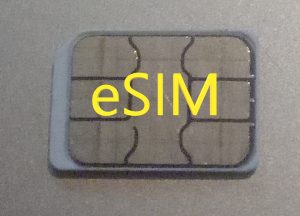
No more fumbling with small SIM cards when you want to change mobile operators or connect a new tariff.
No more searching for a tiny tool to remove the old card, and no more worrying about losing it.
Instead, all the information you need is stored right in your smartphone and can be changed in just a few minutes – all thanks to eSIM technology.
Let’s take a look at what an eSIM is, how it works, and why this little innovation has a huge impact on our daily lives.
If you are still unfamiliar with this term or want to learn more about how eSIM can change your mobile experience, then this article is for you. How does it work? The eSIM technology allows you to store information about your operator directly in the chip that is built into the device.
When you want to change operators or add a new one, you don’t need to look for a new SIM card.
Instead, you can simply download the new operator’s data through the device settings or scan the QR code provided by the operator.
All this makes the process of switching operators or adding additional plans much easier and faster. Advantages ofeSIM Convenience.
You will no longer have problems with finding or replacing physical SIM cards.
Especially useful for those who travel frequently and change operators. Multiple operators.
eSIM allows you to use multiple mobile operators on one device at the same time.
This means that you can have a personal and work number on one phone without having to use two devices. Compactness. The absence of a physical SIM card slot allows manufacturers to make devices smaller and use space more efficiently for other technologies. Security. The eSIM is harder to lose or damage because it is integrated into the device.
In addition, if the device is stolen, the eSIM is much harder to remove. Environmental friendliness.
Reducing the use of plastic for the production of physical SIM cards has a positive impact on the environment. Disadvantages of eSIM Compatibility. Not all devices currently support eSIM.
However, it is only a matter of time as more and more manufacturers include this technology in their new models. Dependence on operators. Some carriers may not support eSIM or provide limited options for using it, so this can be a problem if your chosen carrier is not yet ready to work with this technology. Difficulties with switching. While eSIMs make it easy to switch carriers, there may be some difficulties with setup or compatibility that may require additional assistance from the carrier. The future of eSIM eSIM is rapidly gaining popularity and is likely to become the standard in the coming years.
Already, such giants as Apple and Google are actively implementing it in their devices.
With the development of 5G and an increase in the number of devices connected to the Internet, eSIM technology is becoming more and more relevant. How to set up an eSIM? It is quite simple.
You just need to follow a few steps:
- Receive a QR code from the operator. After contacting the operator, he will provide you with a QR code to activate the eSIM.
- Open the settings on the device. Find the section for setting up mobile communications and select the option to add an eSIM.
- Scan the QR code. Use the device’s camera to scan the QR code, after which the device will automatically configure the eSIM to work with the new operator.
What’s cool is that eSIM not only simplifies the process of switching operators, but also contributes to the creation of smaller and more environmentally friendly devices.
Despite some limitations, such as compatibility and carrier support, the benefits make it the technology of the future that will eventually become the standard.
So, if you’re not familiar with eSIM yet, it’s time to pay attention and see for yourself how this innovation can improve your mobile experience. Interesting facts about eSIM
- Some of the first smartphones to support eSIM were the Google Pixel 2 and the Apple iPhone XS.
However, the first commercial use took place in 2016, when Apple introduced the iPad Pro with support for this technology.
Since then, more and more manufacturers have started to implement it in their devices, and today many modern smartphones support eSIM. - eSIM allows you to store up to 5 or more mobile operator profiles on one device.
In fact, you can have several different numbers and tariff plans and easily switch between them as needed. - If you travel abroad, eSIM allows you to quickly switch to local operators by simply downloading a new profile.
This is much more convenient than looking for a local SIM card and replacing it in your phone. - The use of eSIM helps to reduce the amount of plastic used to produce traditional SIM cards, thereby having a positive impact on the environment by reducing waste.
- The technology is used not only in smartphones but also in other devices, such as smartwatches, tablets, laptops, and even cars.

